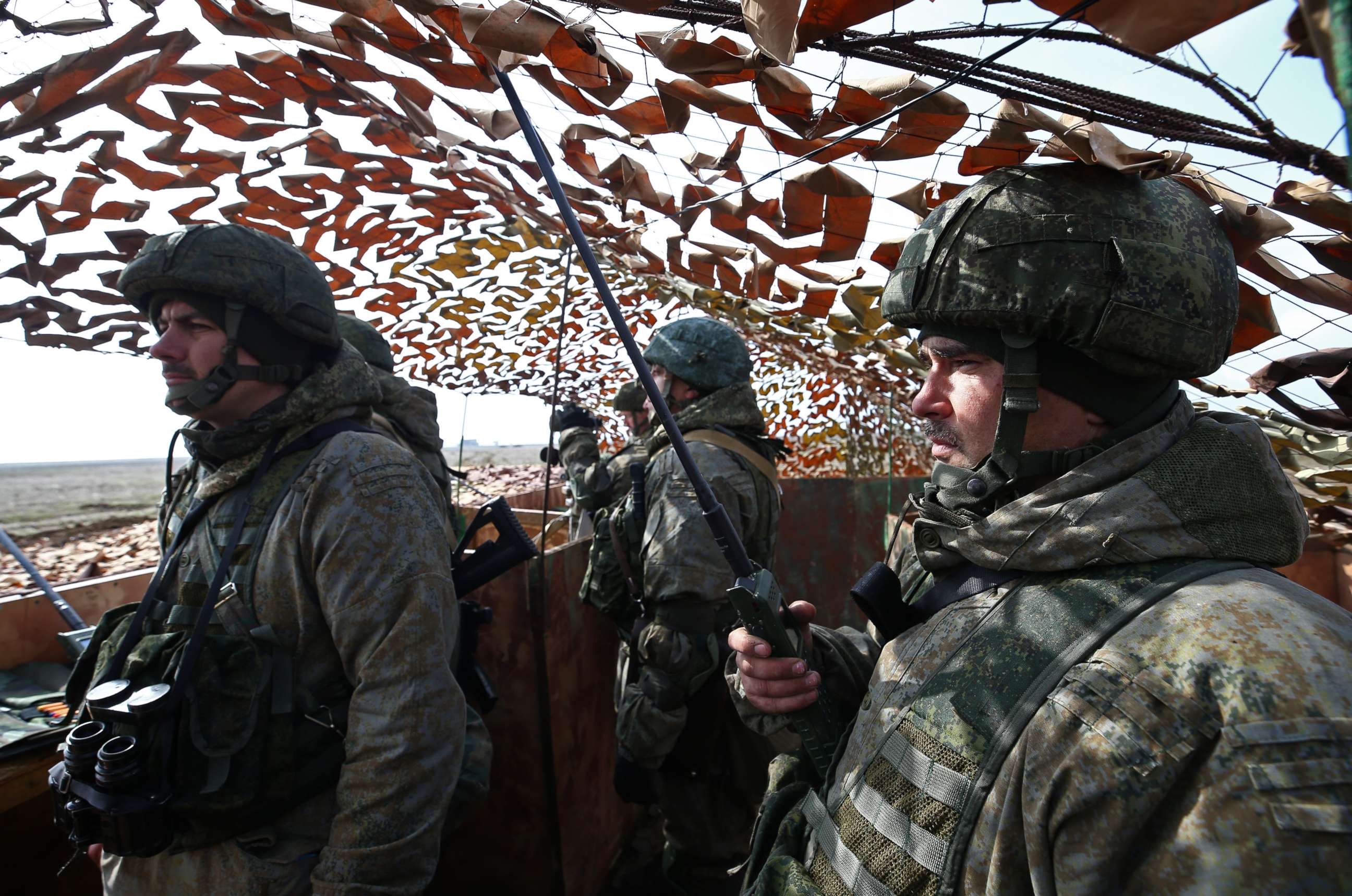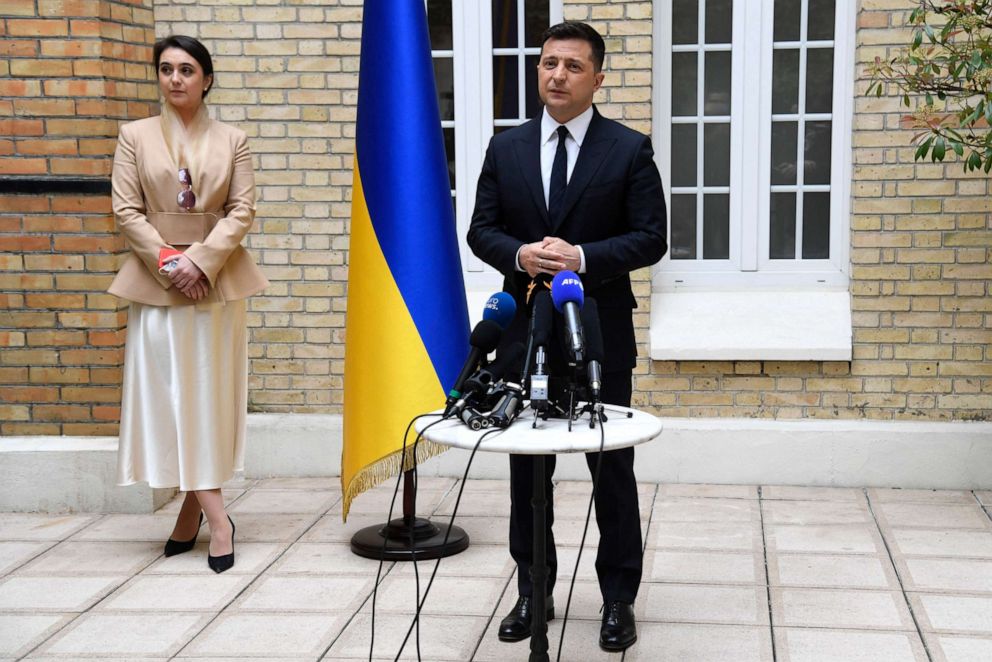Russia moves troops near Ukraine: Analysts explain what's behind the buildup
The latest military movements are likely meant to send a message.
For weeks, Russia has been massing troops close to Ukraine in a military buildup on a scale not seen since its invasion in 2014.
Analysts, as well as Ukrainian and Western officials, have struggled to understand what the Russian buildup means: It is simply posturing intended to send a message to Ukraine and the Biden administration, or is it genuine preparations for Russian military action or even a full-scale invasion of Ukraine?
Right now, only the Kremlin knows the answer. But most observers have concluded for now that the highly visible build-up is most likely saber-rattling, though the threat of escalation still can’t be ruled out.
“In general, the situation is better now than it was a week before,” Oleksiy Semeniy, a former adviser to the secretary of Ukraine's national security and defense council, said in an interview on Friday.
“I would say that actually the percentage of some kind of real war or even mid-size military conflict -- be it on the line or be on the border -- is low,” he said. “It does not mean the situation cannot change.”

The conflict in eastern Ukraine has been at a low intensity since 2015, when a peace agreement ended major fighting. That peace process has been deadlocked more or less ever since, leaving parts of eastern Ukraine under the rule of Russian-controlled separatists who face off down a frontline with Ukrainian government forces. The separatist areas are nominally self-declared republics, but in practice are effectively controlled by Moscow, which has so far stopped short of recognizing them.
Since late March, Russian social media has been full of videos showing trainloads of armored vehicles and heavy artillery moving into Crimea and close to eastern Ukraine. That has been accompanied by a barrage of warlike rhetoric on Russian state media. At the same time, a ceasefire in eastern Ukraine between Russian-controlled rebels there and the Kyiv government has collapsed, with an upsurge in firing.
Estimates of the number of Russian troops deployed near Ukraine now range from around 60,000 to over 100,000, though many of those are permanently stationed there. Russia’s defense minister has said it moved two armies and three airborne units to its southwestern border, saying the buildup is part of a “readiness check” in response to alleged increased activity by the United States and NATO forces.
Russia has set up a large new field base for hundreds of vehicles, visible on commercially available satellite imagery, and foreign journalists have been allowed to get close by.

Most observers say they believe the very visible nature of the Russian buildup means it’s intended to be seen, which suggests it is a message, not a prelude to an invasion.
“We were and are spectators of a show, which many have been taking -- and are still taking -- for reality,” Dmitry Trenin, the director of Carnegie Moscow Center, said in an interview with Russian website 47News.
Many observers believe that show is intended to send signals to both Ukraine and the Biden administration.
To Ukraine, Trenin said, it’s a warning against any attempt to use military force to retake its occupied territories and also to express dissatisfaction over a recent shift by Ukrainian President Volodymyr Zelensky toward a more assertive stance against pro-Russian groups in the country.
To the U.S., Trenin said the message was likewise a warning to keep tight control over Kyiv, which the Kremlin sees as dominated by the U.S.

Other analysts say they believe it was meant as an early test for the Biden administration and as a message from the Kremlin that it can reignite the conflict at will if its interests are ignored.
The moves have succeeded in attracting the West’s attention. President Joe Biden called Russian President Vladimir Putin and offered him a summit meeting in the coming months, something analysts say Putin eagerly seeks.
Some analysts said they believed the Kremlin had seized on more assertive moves by Kyiv recently in order to make its points. The escalation began when Zelensky banned three pro-Russian media channels and sanctioned a powerful oligarch often described as Putin’s point man in Ukraine. Zelensky also conducted military exercises close to the front.
“Even though Kyiv’s moves at that time were not preparations for a military offensive,” Trenin wrote in a recent article, “The Kremlin decided to seize upon them to raise the stakes.”

Trenin and other analysts have suggested Russia is genuinely concerned that Kyiv’s leaders could mistake words of support from the U.S. as backing for an attempt to forcibly take back the occupied regions.
Such a view is unsettling, some observers said, suggesting a dangerous disconnect between the Kremlin’s perspective of the conflict and how it is seen by Ukraine and Western countries.
“There was no Ukrainian military effort underway that could have justified the operations Russia is now engaged in on Ukraine’s borders,” Gustav Gressel, a senior policy fellow at the European Council on Foreign Relations, wrote in a recent article.
“While the Kremlin’s fears are based on illusions, it believes that these illusions entitle it to real offensive actions.”




